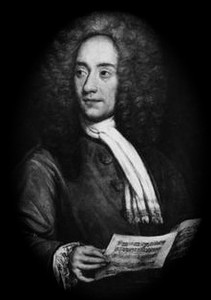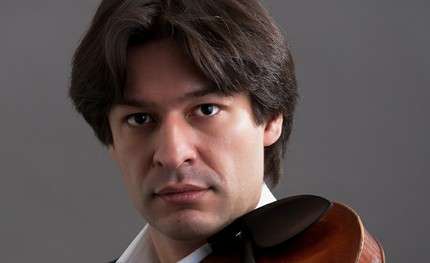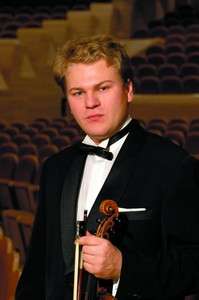
Tommaso Albinoni (Tomaso Albinoni) |
Thomas Albinoni

Only a few facts are known about the life of T. Albinoni, an Italian violinist and composer. He was born in Venice in a wealthy burgher family and, apparently, he could calmly study music, not particularly worrying about his financial situation. From 1711, he ceased to sign his compositions “Venetian dilettante” (delettanta venete) and calls himself musico de violino, thereby emphasizing his transition to the status of a professional. Where and with whom Albinoni studied is unknown. It is believed that J. Legrenzi. After his marriage, the composer moved to Verona. Apparently, for some time he lived in Florence – at least there, in 1703, one of his operas was performed (Griselda, in libre. A. Zeno). Albinoni visited Germany and, obviously, showed himself there as an outstanding master, since it was he who was given the honor of writing and performing in Munich (1722) an opera for the wedding of Prince Charles Albert.
Nothing more is known about Albinoni, except that he died in Venice.
The works of the composer that have come down to us are also few in number – mainly instrumental concertos and sonatas. However, being a contemporary of A. Vivaldi, J. S. Bach and G. F. Handel, Albinoni did not remain in the ranks of composers whose names are known only to music historians. In the heyday of the Italian instrumental art of the Baroque, against the backdrop of the work of the outstanding concert masters of the XNUMXth – first half of the XNUMXth centuries. – T. Martini, F. Veracini, G. Tartini, A. Corelli, G. Torelli, A. Vivaldi and others – Albinoni said his significant artistic word, which over time was noticed and appreciated by descendants.
Albinoni’s concertos are widely performed and recorded on records. But there is evidence of recognition of his work during his lifetime. In 1718, a collection was published in Amsterdam, which included 12 concertos by the most famous Italian composers of that time. Among them is Albinoni’s concerto in G major, the best in this collection. The great Bach, who carefully studied the music of his contemporaries, singled out Albinoni’s sonatas, the plastic beauty of their melodies, and he wrote his clavier fugues on two of them. The proofs made by Bach’s hand and to 6 sonatas by Albinoni (op. 6) have also been preserved. Consequently, Bach learned from Albinoni’s compositions.
We know 9 opuses of Albinoni – among them cycles of trio sonatas (op. 1, 3, 4, 6, 8) and cycles of “symphonies” and concertos (op. 2, 5, 7, 9). Developing the type of concerto grosso that developed with Corelli and Torelli, Albinoni achieves exceptional artistic perfection in it – in the plasticity of transitions from tutti to solo (of which he usually has 3), in the finest lyricism, noble purity of style. Concerts op. 7 and op. 9, some of which include an oboe (op. 7 nos. 2, 3, 5, 6, 8, 11), are distinguished by the special melodic beauty of the solo part. They are often referred to as oboe concertos.
In comparison with Vivaldi’s concertos, their scope, brilliant virtuosic solo parts, contrasts, dynamics and passion, Albinoni’s concertos stand out for their restrained rigor, exquisite elaboration of the orchestral fabric, melodism, mastery of contrapuntal technique (hence Bach’s attention to them) and, most importantly, that almost visible concreteness of artistic images, behind which one can guess the influence of the opera.
Albinoni wrote about 50 operas (more than the opera composer Handel), which he worked on throughout his life. Judging by the titles (“Cenobia” – 1694, “Tigran” – 1697, “Radamisto” – 1698, “Rodrigo” – 1702, “Griselda” – 1703, “Abandoned Dido” – 1725, etc.), as well as by the names of the librettists (F. Silvani, N. Minato, A. Aureli, A. Zeno, P. Metastasio) the development of opera in the work of Albinoni went in the direction from the baroque opera to the classic opera seria and, accordingly, to that polished opera characters, affects, dramatic crystallinity, clarity, which were the essence of the concept of opera seria.
In the music of Albinoni’s instrumental concertos, the presence of operatic images is clearly felt. Raised in their elastic rhythmic tone, the major allegri of the first movements correspond to the heroics that open the operatic action. Interestingly, the title orchestral motif of the opening tutti, characteristic of Albinoni, later began to be repeated by many Italian composers. The major finales of the concertos, in terms of the nature and type of material, echo the happy denouement of the opera action (op. 7 E 3). The minor parts of the concertos, magnificent in their melodic beauty, are in tune with the lamento opera arias and stand on a par with the masterpieces of the lamentose lyrics of the operas by A. Scarlatti and Handel. As is known, the connection between the instrumental concerto and opera in the history of music in the second half of the XNUMXth – early XNUMXth centuries was especially intimate and meaningful. The main principle of the concerto – the alternation of tutti and solo – was prompted by the construction of opera arias (the vocal part is an instrumental ritornello). And in the future, the mutual enrichment of the opera and the instrumental concert had a fruitful effect on the development of both genres, intensifying as the sonata-symphony cycle was formed.
The dramaturgy of Albinoni’s concertos is exquisitely perfect: 3 parts (Allegro – Andante – Allegro) with a lyrical peak in the center. In the four-part cycles of his sonatas (Grave – Allegro – Andante – Allegro), the 3rd part acts as the lyrical center. The thin, plastic, melodic fabric of Albinoni’s instrumental concertos in each of its voices is attractive to the modern listener for that perfect, strict, devoid of any exaggeration beauty, which is always a sign of high art.
Y. Evdokimova





